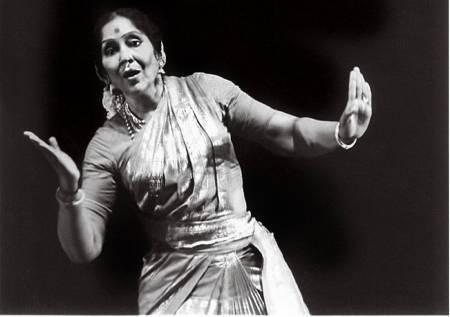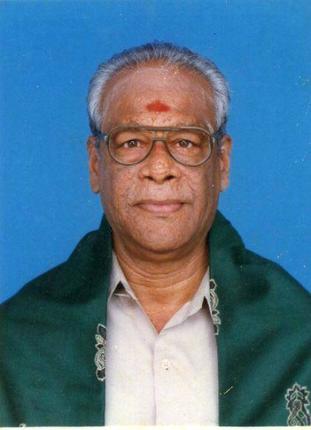
Padams in Tamil stand on their own merit, with their pristine music and emotion-packed lyrics.
The venerable nagaswaram vidwan Sembanarkoil Vaidyanathan ascended the stage to accept the honour that was being bestowed on him. None expected what followed. He sang the Atana padam ‘Chumma Chumma Varuma Sukham’ by Ghanam Krishna Iyer and swept the audience off their feet.

How could any dancer resist the magic of such padams? Or a musician, for that matter? Wistfully, I remembered the other delectable padam in Atana, ‘Tiruvotriyur Thyagarajan,’ often rendered by K.V. Narayanaswamy. He never failed to include Tamil padams in his concerts. Sanjay Subrahmanyan often electrifies his performance with one or two Tamil padams which he resurrects. The Begada padam ‘Yarukkagilum bhayama’ was a masterpiece of the legendary Balasaraswathi. While the musicians bring to the fore the weighty classicism of the music, the dancers bring alive the myriad emotions of the lyrics as well as the contours of the music.
Sure enough, the padam makes the most challenging demands on an artist. “Padam paada padam varanum” (To sing a padam, one needs to be mature and mellow) is a pun quoted by teachers of yore. The dictum would apply to the dancer as well. A major hurdle for dancers today is the paucity of musicians who have a wide repertoire of padams. In earlier times, there were musicians who were exclusive padam singers for the second half of the concert. Jayamma’s padam rendition for her daughter Bala is legendary. The spiralling cost of an orchestra today would make two singers for a concert an unaffordable luxury.
The padam is an awe-inspiring entity and has to be approached with due respect. The learning and perfecting is a process that can stretch over weeks or months, to get every gamaka, anuswara and breath right. If the musician has to go through such travails, the dancer needs to invest more time to learn and absorb it. Even if artists are prepared to learn and perfect padams, whether they would have the audience is a moot question.
The padam is understood to be of a ponderously slow gait. The pada varnams are said to have taken the adjective ‘pada’ to denote leisurely gait. While there are a good number of padams in Tamil that are slow paced, majority of them are medium paced or have madhyama kala gait.
The Tamil padams composed in the latter half of the 18 and the 19 centuries, broadly fall into two categories, bhakti and sringaraSome of the bhakti-oriented padams don the garb of sringara in the madhura bhakti mode. Muthu Thandavar’s ‘Theruvil Vaarano’ is a classic of this genre. By addressing a God, some of the sringara padams make pretence of madhura bhakthi. Kavi Kunjara Bharathi’s enchanting compositions such as ‘Varattum Swami Varattum’ on Muruga fall into this category.
Both varieties, for all purposes, can be taken for secular padams depicting day to day situations and emotions. They are monologues with catchy refrains as their pallavi. In a milieu where artists jostled in the court and vied with one another to catch the attention of a patron, these compositions had an edge over poetry that was recited and sung. The padams could be performed in dance, far more vividly than recitation or music.
Male domain
To find himself described as the cynosure of the maidens of the land, would flatter the male ego no doubt. It is to be remembered that this was an exclusively male domain and the songs were composed by the males, for the males and of the females. Many of the padams indulge in description of the female anatomy and were perhaps not meant for the general public. The lyrics are conversational, colloquial, ungrammatic and have a liberal sprinkling of words and phrases that are region specific and dialect oriented. The reader is flummoxed by indecipherable words such as pathakku, alavaadi, koetti, idumbu, tholi etc., that may be obsolete or an error of the scribes. It is to be remembered that these songs were passed down through learning by the ear with no published lyrics to follow. It is possible that the singer or the listener or both were not well versed in poetry and merely repeated what they assumed to have heard.
The venerated scholar Dr.U.V Swaminatha Iyer , who has published the biographies of Ghanam Krishna Iyer, Goplakrishna Bharathi and Maha Vaidyanatha Sivan , along with some of their songs under the in his foreword to ‘Sangeetha Mummanigal’, says, “ Most keerthanams in Tamil do not adhere to the grammar of poetry. The involvement of several experts in music stops with the music and their knowledge of poetry is limited. Musicians who are composers have not gone beyond keeping to the rules of rhyme in their compositions. Only a few have a sound poetic knowledge and have composed songs that are like golden flowers with fragrance.” He concedes that he could not totally ignore the songs in spite of their lack of poetic and literary merit, because “the manner in which they were tuned was acclaimed as the authoritative norm in music.”
A revisiting of the padams from the perspective of dance offers a rich and varied field for exploration through abhinaya. A survey of the heroines proves that “Here’s God’s plenty.” Bhanudatta’s Rasamanjari describes more than a thousand types of heroines.It is unlikely that many of the composers of the padams were aware of the treatise or the classifications. They wrote from real life around them and picked up words and phrases in common parlance, mainly among the women of their times. Hence a nayika fretting over the tardiness or infidelity of her nayaka could be a parallel to a maiden today lamenting over her lover’s behaviour. The spokesperson of a sringara padam could be a maiden, a matron, a mother chiding the errant daughter, a friend advising the nayika, concubines bickering about each other and so on. Human nature has no boundaries of time or space. Therein lies the appeal of the padams to an audience today in any part of the globe. And the music which is most felicitously and inseparably entwined with the words, enhances the haunting mood of the lyrics and emotions. These reiterate that Bharatanatyam is the visual form of Carnatic music and elevate the dance into Drsya Kavyam (visual poetry).
While it is fairly obvious that the padams must have been inspired by day to day occurrences and observations, not much is known about the context in which they were composed. Wherever information is available, it is a piece of jigsaw puzzle of the social life of the times.
Coming back to ‘Chumma Chumma varuma sukham’ (Will happiness occur on its own / will happiness occur repeatedly), the song oscillates between good humoured advice of a heroine’s confidante and a hint at madhura bhakti. The unevenness in the tone is explained when one learns the context in which it was composed. Ghanam Krishna Iyer was a unique musician hailed for his expertise in the Ghanam mode of singing. It called for rigorous training and vocal prowess. Once when he visited Tyagaraja in Thiruvaiyaru, the latter’s disciples were singing his kriti E papamu jesithira in Atana ragam. Krishna Iyer took up the pallavi to expound the ragam and elaborate on the line. When Tyagaraja requested him to sing one of his own compositions Krishna Iyer sang the impromptu pallavi line Chumma Chumma varuma sukham in the same ragam and elaborated on it. After his return to his home village he was entreated by his admirers to complete the pallavi with anupallavi and charanam lines and he composed them.
Regardless of the hows, whys and wherefores of their creation, the Tamil Padams stand on their own merit, with their pristine music and emotion packed lyrics. For those who clamour today for secular themes in dance, here is a gold mine.
Tyagaraja’s request
Sujatha Vijayaraghavan presents a lecture on padams and javalis titled ‘Chumma Chumma Varuma Sukham’ (Will happiness occur on its own?/ Will happiness occur repeatedly?), on April 20.
The song itself oscillates between good humoured-advice of a heroine’s confidante and a hint at madhura bhakti. The unevenness in the tone is explained when one learns the context in which it was composed. Ghanam Krishna Iyer visited Tyagaraja in Thiruvaiyaru once. The latter’s disciples were singing his kriti ‘Ee Papamu Jesithira’ in Atana. Krishna Iyer took up the pallavi to expound the raga and elaborate on the line. When Tyagaraja requested him to sing one of his own compositions, Krishna Iyer sang ‘Chumma Chumma Varuma Sukham’ in the same ragam and elaborated on it. After his return to his home village, he was entreated by his admirers to complete the pallavi with anupallavi and charanam lines and he composed them.
Natyarangam schedule
Venue: Narada Gana Sabha, TTK Road
April 19, 6 p.m.: Bharatanatyam by Ishwarya Ananth (Disciple of Prof. Sudharani Raghupathy); 7.30 p.m.: Madhumita Sriram (Disciple of A. Lakshman)
April 20, 6 p.m.: “Chumma Chumma Varuma Sukham,” a lec-dem on Javalis and Tamil Padams by Sujatha Vijayaraghavan. Music by Geetha Raja; Dance by Radhika Vairavelavan and Saranya Nambhi.
source: http://www.thehindu.com / The Hindu / Home> Features> Friday Review> Music / by Sujatha Vijayaraghavan / Chennai – April 27th, 2014